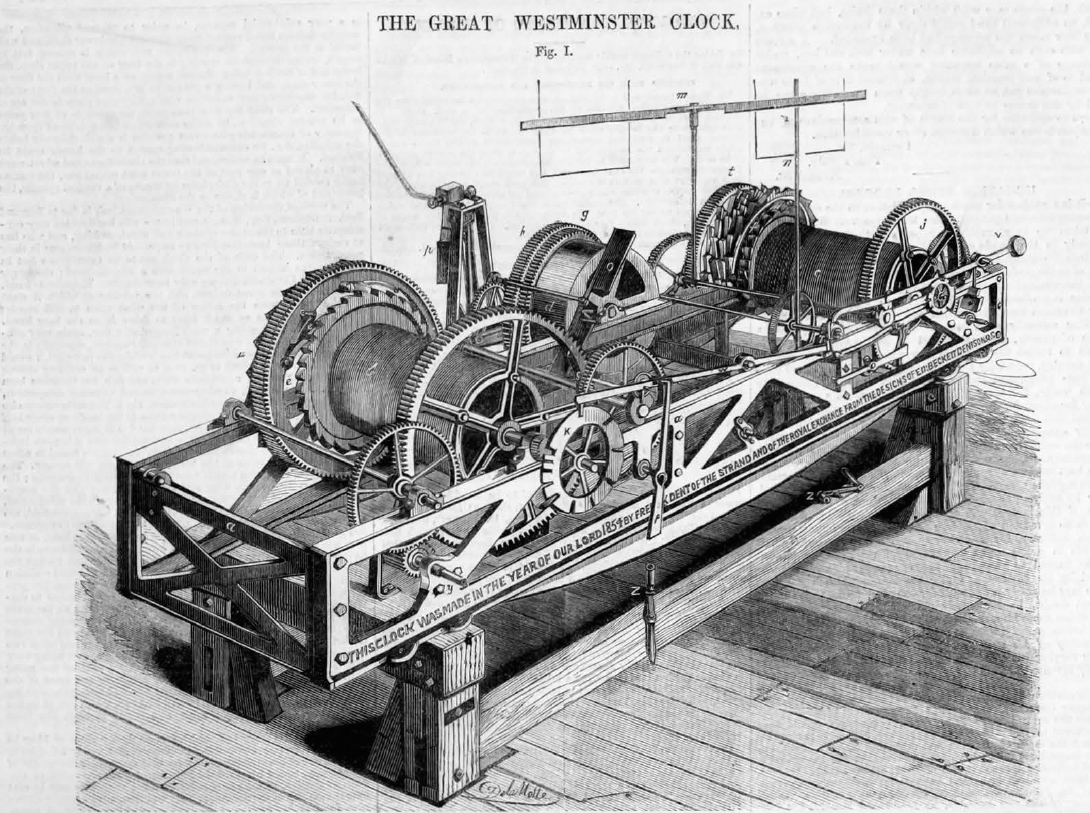October 1856: The Westminster Clock
For almost 160 years the giant faces of the Westminster Clock (the most distinctive features of the tower popularly known as Big Ben) have gazed out across London – marking off the minutes through two world wars, and multiple PMs and monarchs.

And in 1856, shortly before its installation in the Westminster’s iconic tower The Engineer took a look at a device that’s still considered by many to be one of the finest and most innovative mechanical clocks ever to be built.
Designed in the 1840’s by lawyer and amateur horologist Sir Edward Beckett Denison, the Great Westminster clock represented a fundamental breakthrough in clock design.
“The merit of the design of the Westminster clock is due to Edmund Beckett Denison,” reported The Engineer, “a gentleman who has devoted very considerable time to the study of clock and watch-making and who has at various times introduced many important improvements in their construction.”
At its heart is an innovation that’s been hailed as one of the most significant horological advances of the 19th century: the double three-legged gravity escapement.
An escapement is the device in a mechanical clock that transfers energy to its time keeping element. It’s driven by force from a coiled spring or weight that’s transmitted through the clock’s gear train. Each swing of the pendulum releases a tooth of the escapement’s gear wheel – allowing the gear train to advance by a fixed amount.
Register now to continue reading
Thanks for visiting The Engineer. You’ve now reached your monthly limit of premium content. Register for free to unlock unlimited access to all of our premium content, as well as the latest technology news, industry opinion and special reports.
Benefits of registering
-
In-depth insights and coverage of key emerging trends
-
Unrestricted access to special reports throughout the year
-
Daily technology news delivered straight to your inbox











Water Sector Talent Exodus Could Cripple The Sector
Well let´s do a little experiment. My last (10.4.25) half-yearly water/waste water bill from Severn Trent was £98.29. How much does not-for-profit Dŵr...